What is the situation of India's silk screen printing machine market?
【Abstract】
When it comes to India's silk screen printing machine market, it has really "picked up" along with the local manufacturing industry in recent years. Compared with other Southeast Asian countries, the demand here is quite interesting - it is not only inseparable from traditional industries but also mixed with the vitality of emerging manufacturing. For example, printing patterns on textiles, precision printing on electronic products, and even patterns on spice packaging and religious supplies all rely on silk screen printing machines. India's silk screen printing machine market is gradually shifting from "being barely usable" to "being both good and efficient", which is worth talking about in detail.

1. Why can India's silk screen printing machine market keep growing?
India's silk screen printing machine market has not grown the fastest in recent years, but it is steady, with an annual growth rate of 6%-8%. In 2024, the sales volume of new machines increased by 7.8% compared with the previous year. Although its current scale is about 90 million US dollars, its foundation is solid. So what is driving its growth? Mainly three aspects:
The textile industry is definitely the top one! India has always been a major exporter of textiles. In textile factories in Agra and Ahmedabad, silk screen printing machines are simply "a necessity". They are used to print patterns on curtains, saris, and T-shirts. Let's just say, a medium-sized textile factory can't operate without 10-15 special silk screen printing machines, and the demand in this area accounts for 35% of the total market;
Consumer electronics also contribute to the growth. In the electronic industrial park in Bangalore, parts such as mobile phone casings and charger panels have higher and higher requirements for silk screen printing precision, forcing factories to replace them with high-end equipment. The sales volume in this part can increase by 10% every year;
There are also various local consumer goods, such as spice packaging boxes, calendars printed with gods and statues, offering trays, etc., which all need small and medium-sized silk screen printing machines. In 2024, the sales volume of such equipment accounted for 40%, which is very stable.
The industry estimates that the scale of India's silk screen printing machine market will exceed 130 million US dollars by 2027. Among them, the "flexible silk screen printing machine" that can adapt to small-batch and multi-variety work is the most popular, with an annual growth rate of 14%, which is definitely a potential stock.
2. What do silk screen printing machines in the Indian market look like? Where are they used?
Because India's silk screen printing machine market has a wide range of industries, the types and uses of machines are really quite different from those in other places:
Roller silk screen printing machine
This thing mainly deals with textiles. It is really good at printing large-area fabrics such as curtains, saris, and T-shirts. Most textile factories in India are small and medium-sized workshops, so this kind of machine is mostly semi-automatic. It is not expensive, costing 5,000-10,000 US dollars, but it can print 3,000-5,000 meters of cloth a day, which is quite practical. In the textile cluster in Gujarat alone, there are more than 2,000 such machines, accounting for a quarter of the total number of silk screen printing machines in India.
High-precision flatbed silk screen printing machine
This is a "technical type", specially used for printing consumer electronic components, such as mobile phone casings, LOGOs on laptops, and control panels of refrigerators and washing machines. The precision must be controlled within 0.02 mm, and even a little error is not allowed. A mobile phone foundry in Bangalore imported high-precision equipment from Germany, which can print 12,000 panels a day. Although it is a bit expensive, costing 100,000-200,000 US dollars, the sales volume still increased by 18% in 2024, indicating that factories really need it.
Semi-automatic silk screen printing machine
This can be regarded as the "popular model" in the Indian market, especially suitable for small and medium-sized enterprises to work flexibly - printing spice boxes today, god statues calendars tomorrow, and small billboards the day after tomorrow. It is very flexible. In small factories in second- and third-tier cities in India, 80% of the silk screen printing equipment is this type. More than 3,000 units were sold in 2024, and its popularity is unmatched.
3. Who is doing business in silk screen printing machines in India? What tricks do they have?
The attractive India's silk screen printing machine market has attracted both international brands and local manufacturers. The top enterprises together can account for 35% of the market share, each with its own way of playing:
International brands: Enterprises from Japan, Germany, etc., are smart. They know that it is not easy to promote expensive equipment directly, so they have partnered with local Indian manufacturers to build factories, specially producing machines that adapt to local voltage (230V) and high-temperature weather. What's more, they have launched a leasing model of "paying by printing volume", so that small and medium-sized enterprises do not have to pay a lot of money at once, which lowers the threshold a lot. In 2024, 60% of the high-end high-precision flatbed models were sold by these international brands;
Local enterprises: Manufacturers in Mumbai and Delhi mainly focus on semi-automatic and roller silk screen printing machines, with prices being one-third to half of those of international brands, which is full of cost performance. Moreover, their after-sales outlets are widely distributed in more than 50 cities across the country. Even if the machine breaks down in rural areas, someone will come to repair it within 24 hours. In 2024, 80% of the small and medium-batch equipment market was dominated by local brands.
By the way, in order to keep up with the trend of India's "digital transformation", some enterprises have also developed silk screen printing machines with IoT functions, which can remotely monitor the operation status of the machines. Although only 5% were sold in 2024, the growth rate is 30%, which may be a trend in the future.
Summary
India's silk screen printing machine market is now in a state where "traditional businesses make steady profits and new demands grow rapidly" - on the one hand, the textile industry has a large demand, and on the other hand, the electronic manufacturing industry is forcing equipment upgrades. Looking ahead, equipment that can reduce costs, ensure precision, and cope with the "unpredictable" production mode of small and medium-sized enterprises will definitely be the most popular. If you want to enter this market, you have to consider local production, expand service outlets to small places, and be able to handle various industrial needs, otherwise it will be difficult to gain a foothold. Generally speaking, India's silk screen printing machine market will grow steadily in the next five years, with many opportunities, which is worth paying more attention to.

